Search Results
Fine Jewelry University Articles matching: “Synthetic diamond”
Showing only FJU Article results. Click here to show all results.
Fine Jewelry University (Show All FJU Articles)
-
Synthetic Gems: The Whole Story
… made and can quickly be identified. Other synthetics are so well made it is impossible to id them in jewelry and can only be positively identified in gem labs with millions of dollars worth of equipment and world class personnel. Synthetic diamonds on the high end and synthetic quartz on the low end are both very difficult to positively identify as synthetic. Both, I feel, are impossible to identify in a piece of jewelry. Synthetic ruby, sapphire, alexandrite and emerald are very …
-
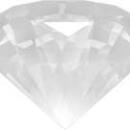
Fake Diamonds: The Great Diamond Attack
…, in the gem world, means made of the same chemicals (elements) and crystal design as nature but is man made. So, a synthetic diamond is the same chemistry (carbon element) and crystal structure (cubic) as natural diamond but made in a factory. Yes, …synthetic diamonds and have for many years now. Most are used in the manufacturing of tools like diamond tip drills. Synthetic diamond crystal big and pretty enough for jewelry has been made since the 1950’s. But, it just costs too much to justify …
-

How to Tell If a Diamond Is Natural or Lab Grown
…. If you are not familiar with lab grown diamonds, you might want to check out our introduction to lab grown and synthetic diamonds before continuing with this article. So, now you know that lab grown diamonds are just as real as natural diamonds, but… you be worried that your diamond is lab grown and no one told you? Probably not. The vast majority of gem quality synthetic diamonds being produced today are responsibly disclosed and sold as lab grown diamonds. Many major diamond suppliers have even…
-
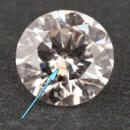
What Are Lab Grown Diamonds?
… can also mean man-made, copied, unreal, or even imitation. But, in this context, what do we mean when we say “synthetic diamond”? In the gemological world, synthetic is a highly technical term. When speaking technically, synthetic gems are man-made … with the same crystal structure and chemical composition as the specific gem that is being created. Therefore, a “synthetic diamond” has the same crystal structure and chemical composition as a natural diamond. The same cannot be said of the many …
-
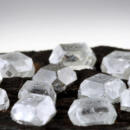
Is a Lab Grown Diamond Right for Me?
… fakes (also completely false). We’re here to help cut through some of the rhetoric, so you can make an informed and logical decision about what kind of diamond is right for you. First of all, if you’re not sure what a lab grown or synthetic diamond is, please check out our basic introduction to lab grown diamonds before reading on. So, how should you decide if a lab grown diamond is right for you? Let’s take a look at the pros and cons. Pros, the benefits of lab grown diamonds The …
-
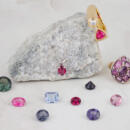
Gem in the Spotlight: Spinel
… create spinel in even more colors than it is naturally found in. Because of how easily it can be created in a lab, synthetic spinel has been used to imitate many other gemstones (ruby, sapphire, tourmaline, zircon, etc.). In fact, the …, along with inclusions can be used to separate the two. Natural spinel has a refractive index of 1.718 while its synthetic counterpart (depending on the process used) has a refractive index of 1.728. In recent years, scientists have developed…
-

How Are Lab Grown Diamonds Made?
… and high temperature needed for diamond formation are naturally found. We see diamonds closer to the surface of the earth when a rare type of deep volcano brings them up to where humans can find and mine them. The first successful synthetic diamonds were made by mimicking nature with High Pressure/High Temperature (HPHT) manufacturing. There are three basic manufacturing processes used to make HPHT diamonds: the belt press, the cubic press, and the split-sphere (BARS) press. The …
-
Understanding the Diamond Buying Game
… can shop based on price or convenience; the product is the same. People like shopping this way. I like it this way. Diamonds are not this way. The four C’s of diamonds are not that old, less than 100 years. Before that system every business… upon grading standard but in reality this is not always the case. Today, to make the grading standard more uniform, diamond certification by grading laboratories is thought to make diamonds a commodity. Again the dream is not the reality. …
-
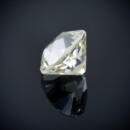
The History of Diamond Cuts
One of the earliest recorded statements about diamonds is: “the substance that possesses the greatest value, not only among the precious stones, but of all human …the diamond cut is the story of humankind’s love of diamonds and our quest to unlock their true brilliance. Before Diamond Cutting The Romans loved diamonds but did not have the technology to change their shape. So, the Romans wore uncut … diamond’s remarkable attributes is that the natural diamond crystal is beautiful without any human modification. Diamonds normally form in the octahedral shape which looks like two pyramids stuck together at the base. Naturally, the first …